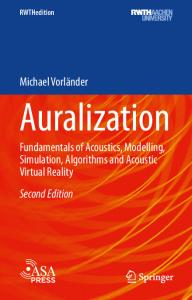Virtual Reality
- PDF / 9,755,732 Bytes
- 95 Pages / 612 x 792 pts (letter) Page_size
- 57 Downloads / 356 Views
^:^ -h
/
Patch discovery & vertex insertion
Figure 1. Valence-driven vertex removal and retriangulation.
858 V See: Middleware for streaming 3D meshes
References 1. P. Alliez and M. Desbrun, "Progressive compression for lossless transmission of triangle meshes," Proceedings of SIGGRAPH 01. 2. J. Rossignac, "Handbook of Discrete and Computational Geometry," CRC Press, Chapter 54.
VC-l VIDEO COMPRESSION Definition: VC-l is a video codec developed for broadcast interlaced video as well as progressive video by Microsoft. VC-l is derived from Microsoft's proprietary WMV-9 but awaits SMPTE ratification. VC1 is pure video compression technology, and is expected to be deployed as key engines in satellite TV, IP set-tops and high-definition DVD recorders.
Simple and Main Profiles for VC-l Video The Simple and Main Profiles (SP/MP) of VC-l are supposed to be the same as those of WMV-9 in progressive compression, respectively. However, there is no Advanced Profile (AP) in WMV-9 to compare with VC-l AP. VC-l AP mainly focuses on interlaced video compression technology. And, the interlace tools cannot be compared directly in both standards. Even the starting point is different ~ the input format is YUV4:1:1 for WMV-9, but is YUV4:2:0 for VC-l. Note that only Field-based prediction and Frame-based prediction are selectively applied in each MB in the interlace tool of WMV-9. This tool is applied when the INTERLACE flag is turned on in the Sequence header.
Advanced Profile for VC-l Video The number of B frames is not fixed between two references in VC-l, while it is a constant value that can be found in the Sequence header in WMV-9. New distance value comes into the Picture Structure at Entry- point Layer with REFDIST_FLAG. REFDIST data indicates the number of frames between the current frame and reference one. Progressive-Picture/ Frame-Picture/ Field-Picture can be mixed in a video. It is the encoder job to construct each picture with a FCM (Frame Coding Mode). The maximum number of references is 2 for P Field-Picture. The references are specified in Picture layer. If both 2 references are selected, the selection of reference information is described in MB level and Block level. The number of references is always 4 for B Field-Picture ~ no Picture layer selection is needed. So, the selection of reference is always in MB level and Block level. Note that one of reference fields for bottom field in a B frame is its top field itself. P Field-Picture has 2 MC modes (IMV with 16x16, 4MV with 8x8). B Field-Picture has 3 MC modes (IMV with 16x16 in forward or backward modes, 2MV with 16x16 in interpolative or direct modes, 4MV with 8x8 only in forward or backward modes). P Frame-Picture has 4 MC modes (IMV Frame-based prediction with 16x16, 4MV Framebased prediction with 8x8, 2MV Field-based prediction with 16x8 (each field), 4MV Fieldbased prediction with 8x8 (each field 16x8 divided to left/right 8x8)). B Frame-Picture
Encyclopedia of Multimedia 859 has 4 MC modes (IMV Frame-based prediction with 16x16 in forward or backwar
Data Loading...











